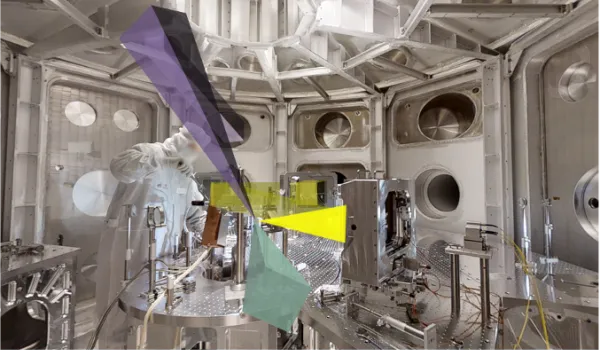
U.S. and Czech scientists collaborate to explore gamma-ray production with high-power lasers
The U.S. National Science Foundation and the Czech Science Foundation, or GACR, are partnering on a new collaborative project of scientists from the University of California San Diego and Extreme Light Infrastructure Beamlines in the Czech Republic which aims at demonstrating efficient generation of dense gamma-ray beams.
Stellar objects like pulsars can create matter and antimatter directly from light because of their extreme energies. In fact, the magnetic field, or "magnetosphere," of a pulsar is filled with electrons and positrons that are created by colliding photons. Reproducing the same phenomena in a laboratory on Earth is extremely challenging. It requires a dense cloud of photons with energies that are millions of times higher than visible light, an achievement that has so far eluded the scientists working in this field.
As the first international laser research infrastructure dedicated to the application of high-power and high-intensity lasers, the Extreme Light Infrastructure, also known as ELI ERIC facilities, will create the necessary conditions to test the theory that suggests high-power lasers ought to be able to produce a photon cloud.
The roughly $1 million project, jointly funded by NSF and GACR, combines theoretical expertise from UC San Diego, experimental expertise from ELI Beamlines, and target fabrication and engineering expertise from General Atomics.
"We are thrilled to be working with our counterparts in the Czech Republic to further expand international scientific cooperation in artificial intelligence, nanotechnology, and plasma science research. I am optimistic this will be the first of many collaborative projects between NSF and GACR," says NSF Director Sethuraman Panchanathan.
These experiments will provide the first statistically relevant study of gamma-ray generation using high-power lasers. Researchers hope the work will open the way for secondary high-energy photon sources that can be used not only for fundamental physics studies, but also for a range of important industrial applications such as material science, nuclear waste imaging, nuclear fuel assay, security, high-resolution deep-penetration radiography and more. Such "extreme imaging" requires robust, reproducible and well-controlled gamma-ray sources. The present proposal aims exactly at the development of such unprecedented sources.
GACR President Petr Baldrian added, "This is the first project funded by the Czech Science Foundation and the U.S. National Science Foundation. I believe that the new collaboration between the agencies will lead to a number of successful projects and collaborating scientific teams from the Czech Republic and the USA will benefit from it."
